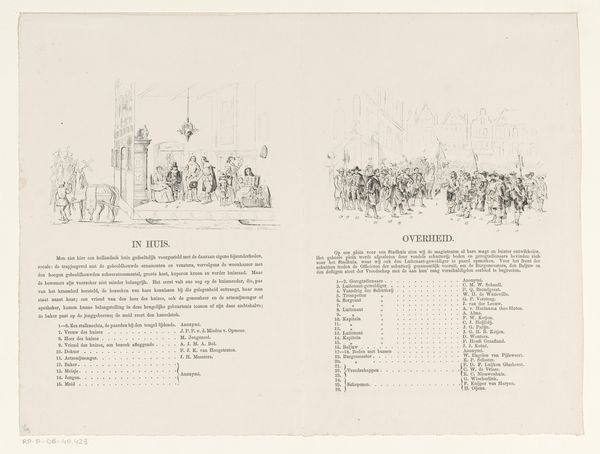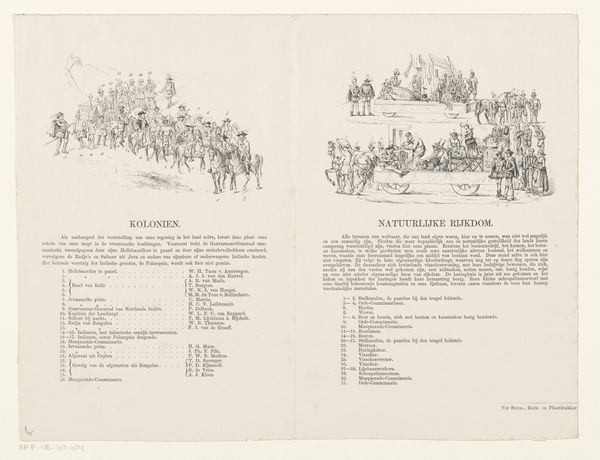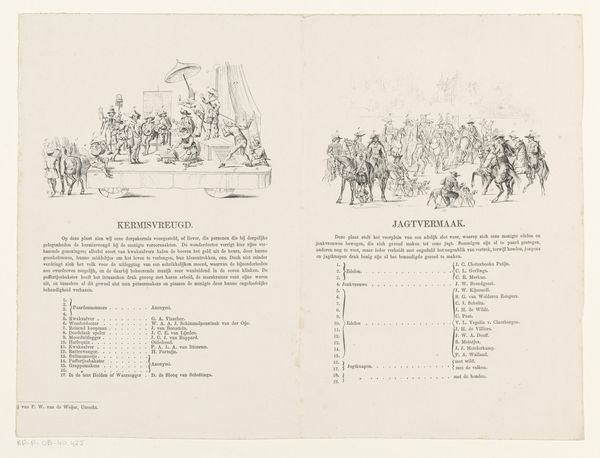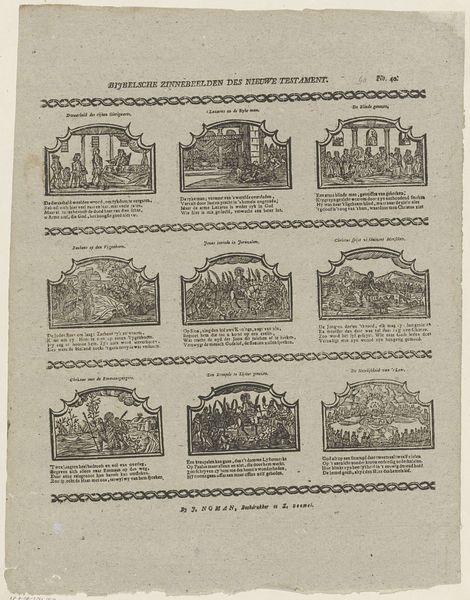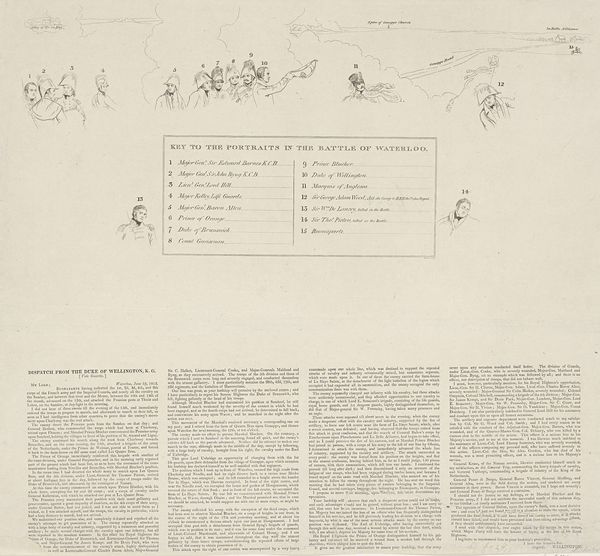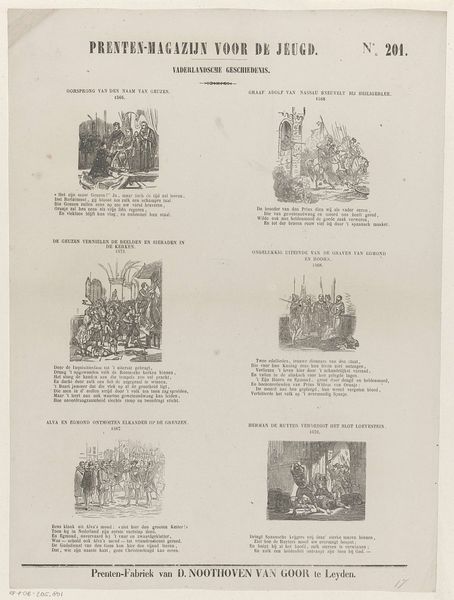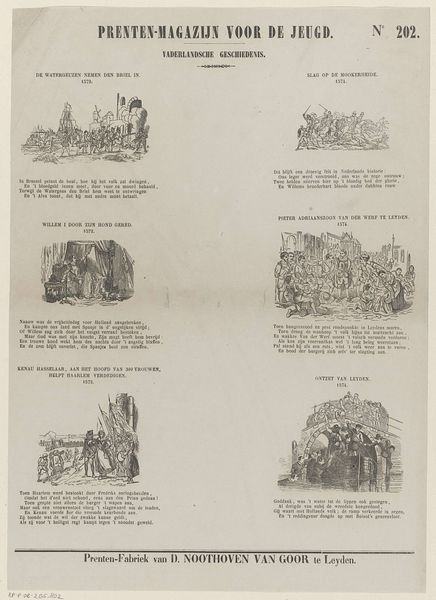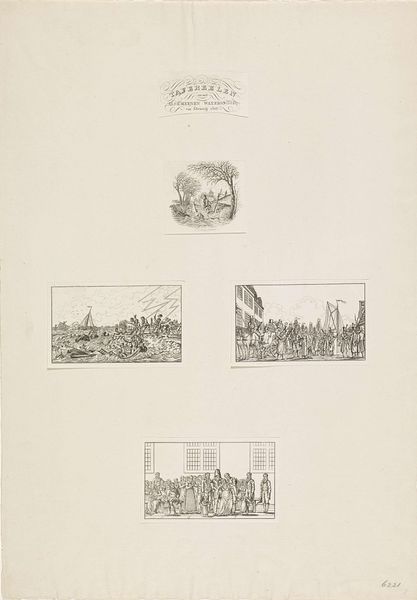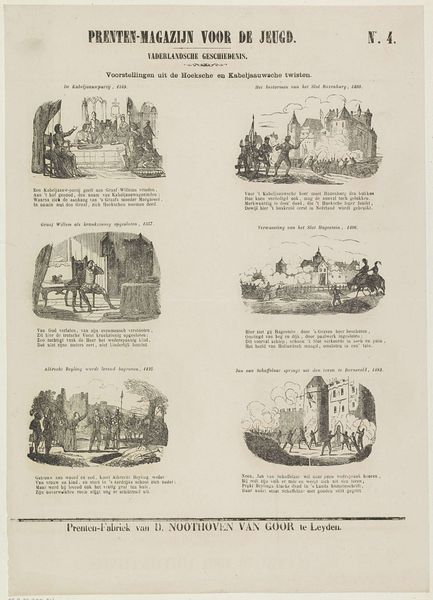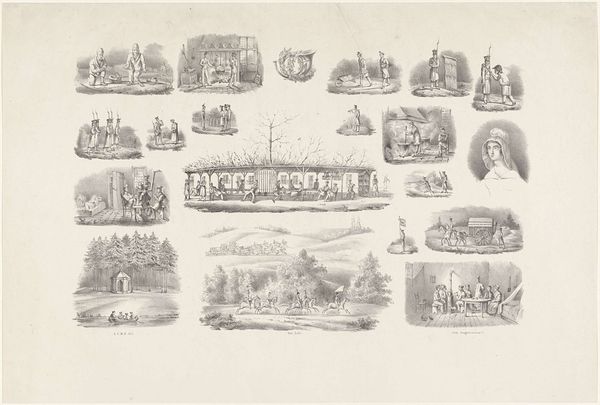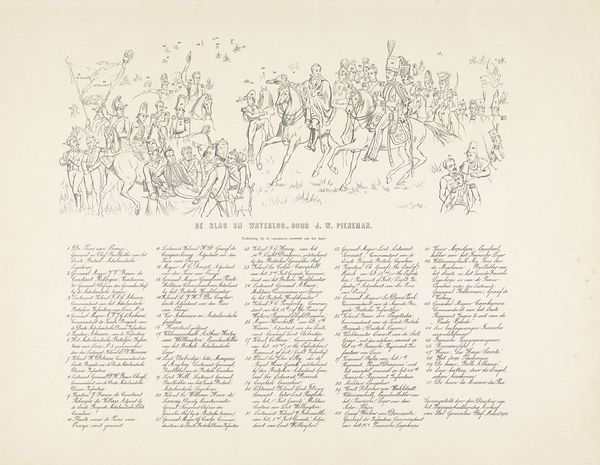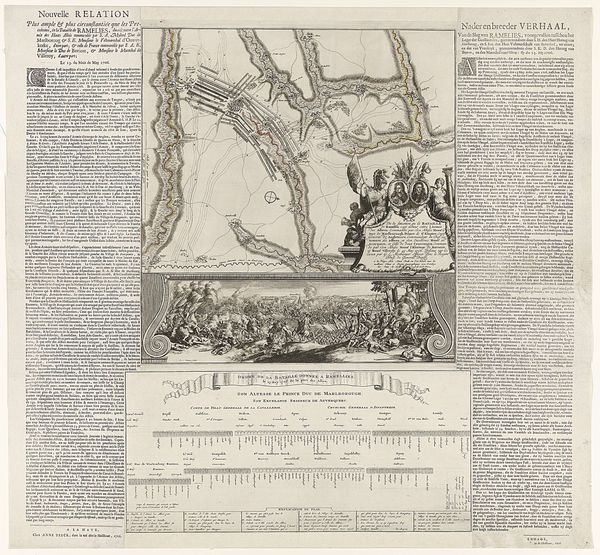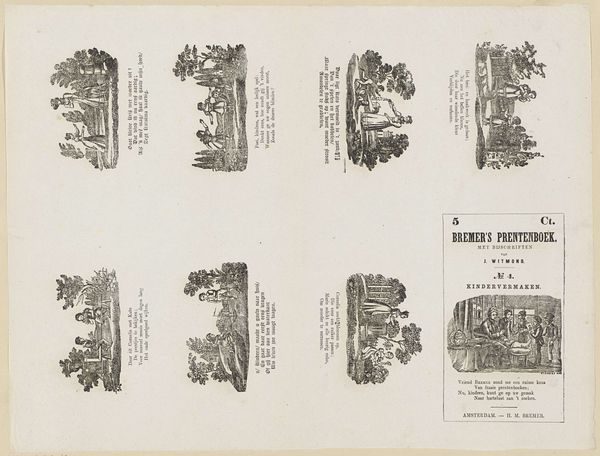
print, engraving
# print
#
genre-painting
#
history-painting
#
engraving
#
realism
Dimensions: height 498 mm, width 662 mm
Copyright: Rijks Museum: Open Domain
Curator: What strikes me immediately about this print is its detail – an intricate tapestry of vignettes! Editor: Indeed! It is an engraving titled "Utrechtse Maskerade van 1856, Verklaring en Legenda," made anonymously in 1856 and currently held at the Rijksmuseum. It meticulously documents a masquerade held that year in Utrecht. What’s your take on these masquerades, considering their context? Curator: These events served complex purposes. Masquerades like this weren't mere entertainment. They were displays of civic pride and historical awareness, very consciously placing the contemporary city within a grand narrative. This one particularly aimed to remember a very important point in history for the Dutch: its 1576-1577 alliances that later paved the way to becoming fully independent. It was about forging and performing an identity through imagery. I do wonder about its impact! Editor: From an iconographic perspective, the image cleverly juxtaposes historical references with contemporary figures. Notice the recurrent symbols of Dutch identity and prosperity subtly woven into each tableau. This interweaving suggests that these figures embodied traditional ideals, offering a cultural and psychological mirror of shared heritage. Curator: I would even say this visual encoding helped transmit values. The organization into thematic groupings - ‘On the street,’ ‘At home,’ ‘Overseas,’ ‘Colonies’ and so on - reinforces social hierarchies and expectations. How else would an artist reach a large population at a point in time where visual literacy was so central for society's evolution? Editor: I agree, the organization creates symbolic frames which enhance meaning! It highlights historical moments like "colonies," underscoring cultural memory that may affect the psychological interpretation of that colony over time and throughout Dutch culture. We should also highlight the written explanation as its central element in conveying this story. Curator: A keen point. This textual anchoring really guided interpretations and consolidated messages to prevent people from interpreting in counter-narratives that did not align with societal goals at the time. That shows how carefully crafted this propaganda piece truly was! Editor: Propaganda implies a distortion. Rather, it feels more about collective self-representation, consciously highlighting virtues for its citizens while subtly underscoring Dutch power structures abroad. A masquerade's spectacle mirrors the Dutch gaze projecting ideals across space. What did you learn today? Curator: Looking at this engraving helps us question the official historical narratives museums perpetuate, while questioning if an artwork reflects reality, or reality is mirroring itself through the visual memory of this engraving. Editor: Fascinating how historical events and art continue echoing, reinterpreting collective psyches and beliefs, showing both Dutch traditions while helping deconstruct those beliefs through time.
Comments
No comments
Be the first to comment and join the conversation on the ultimate creative platform.
